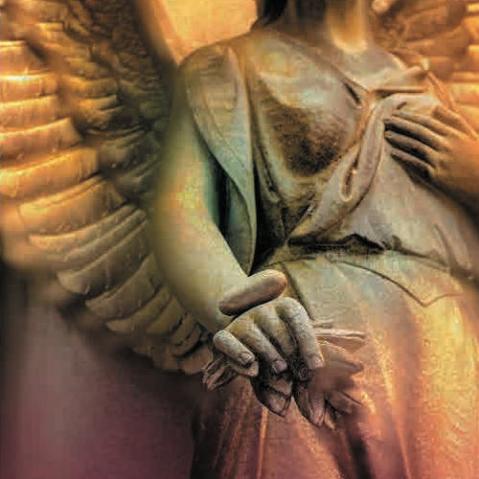Get on top of depth of field
Accurate control of depth of field is a crucial element in creating the pictures you desire. The depth-of-field preview button, a standard feature on quality digital SLR cameras, allows you to check and adjust the depth of field before actually taking your photograph.
 A large depth of field was purposely chosen for this image of a soaring bald eagle, in order to illustrate the bird’s habitat by showing the snow-capped mountains in the bottom of the frame.
A large depth of field was purposely chosen for this image of a soaring bald eagle, in order to illustrate the bird’s habitat by showing the snow-capped mountains in the bottom of the frame.
300mm lens | ISO 100 | 1/250 sec at ƒ/16
The depth of field in an image is defined as the area in focus from the nearest to farthest point, and it is controlled by the lens aperture. Being able to control depth of field in your image is one of your most important tools for creating the photograph’s mood. For example, with a 300mm lens wide open at ƒ/2.8, the depth of field will be very shallow, isolating the bird from its background. The same frame photographed at ƒ/22 will have a far greater depth of field, and the background may be clearly visible. In short, the higher the ƒ-stop, the greater the depth of field.
 This image of a grey heron’s head was taken with an aperture of ƒ/4; this very shallow depth of field throws the messy background into a soft wash of colour so attention can focus on the bird.
This image of a grey heron’s head was taken with an aperture of ƒ/4; this very shallow depth of field throws the messy background into a soft wash of colour so attention can focus on the bird.
At any chosen aperture, the farther your subject is from the camera the more your depth of field increases; therefore, when birds are very close you need to check that you have enough depth of field for the entire bird to be sharp, if this is what you desire. You do this by using a depth-of-field preview button on your camera. This tool is indispensable when choosing a DSLR, since without one you will not be able to judge with any accuracy where your nearest and farthest points of focus are.
 With a large depth of field—ƒ/16 in this case—there’s a more untidy background and foreground.
With a large depth of field—ƒ/16 in this case—there’s a more untidy background and foreground.
Most bird photographers aim to shoot with the lens as wide open as possible as this allows for as fast a shutter speed as possible, but, more importantly when using a long telephoto lens, it also creates a pleasingly out-of-focus foreground and background, thus placing attention on the bird. This is particularly helpful when birds are set against very messy or distracting backgrounds.
Using a shallow depth of field on birds close up can offer opportunities for high-impact images. The eye is nearly always going to be the focal point in an image for a viewer, so you should always aim to at least have this sharp. There will be occasions when a large depth of field can give a real feel of sense of place, providing the viewer an opportunity to gaze upon the surrounding habitat in which the bird is placed.
Focusing on more than one bird can present you with a dilemma: do you go for maximum depth of field and try and get both birds? If you are focusing on a flock, do you try to get as many as possible sharp, or do you selectively focus on an individual and push the rest out of focus? If the birds are too close to put them cleanly out of focus, it is often best to try for a large depth of field and get as many as possible in focus, as birds that are just out of sharp focus can be very distracting.
The Bird Photography Field Guide is David Tipling’s expert reference to teach you everything you need to know about capturing birds in all their beauty. With useful advice on the essential equipment and photographic techniques, as well tips on composition to get you thinking more creatively, you’ll be taking superb photos that show off your subject in the best possible way.
 The Bird Photography Field Guide
The Bird Photography Field Guide
David Tipling
Buy it now!
RRP for print edition: £8.99




